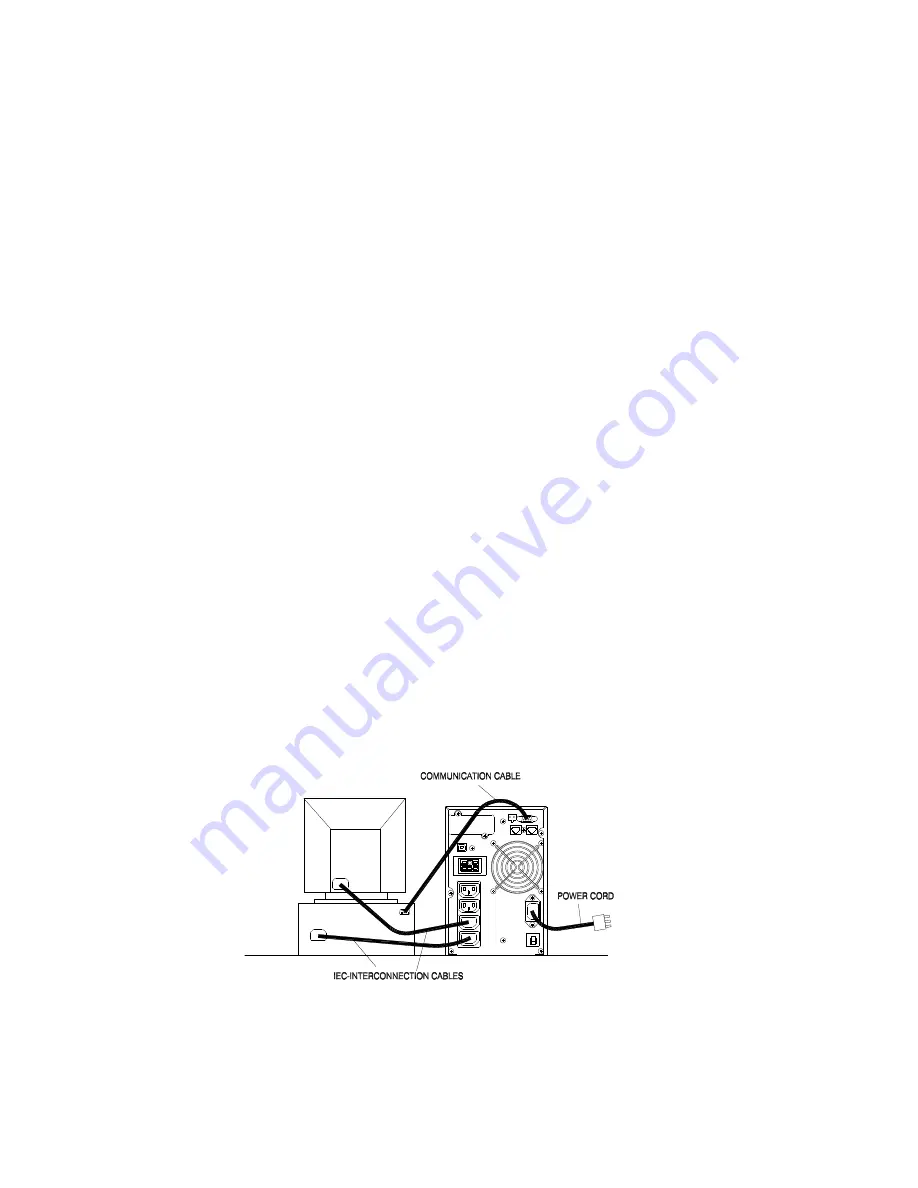
21
5.3 Connection to mains and loads (1000 - 3000 VA)
The following Input and Output cables come supplied with all models
1000 VA,
(option)- IEC 320 10 A (Input cable)
2000 VA
Two IEC-IEC 320 10 A (Load cable)
3000 VA
(option)-IEC 320 16 A (Input cable)
Two IEC-IEC 320 10 A (Load cable)
Ensure that the UPS is disconnected from mains and loads while connecting the External
Battery Cabinets, if needed.
Use the battery cable that comes with the External Battery Cabinet to connect the External
Battery Cabinet to the UPS. Connect a second battery cabinet to the first one with the cable
provided if more than one is to be installed.
Be aware of UPS parameters and changing the Battery pack quantity when using the external
battery cabinets (see chapter 7.2)
Connect the Input cable to the UPS and connect the other end to a grounded outlet. The batteries
will automatically charge when connected to the mains. Please realize that although you may
start using the UPS immediately, maximum back-up time will still not be available, so it is
recommended to charge the batteries for a minimum of 8 hours before use.
If unit instantly shows a “Site Wiring Fault”, rotate the connector (Schuko) (see chapter 7.4).
After charging, connect the loads to the UPS (see the example in fig 3).
Do not connect any devices that have the possibility of overloading the UPS or drawing
half-wave rectified current, such as hair dryers or vacuum cleaners.
Should computer or alarm connections be used, use connections according to chapter 6 of the
manual provided with that option. The connections can be referred to on the rear panel.
The installation is now complete.
Fig. 3
Example of Installation of Plug & Play products
















































